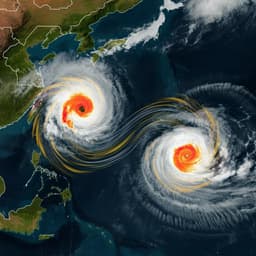
Earth Sciences
Global expansion of tropical cyclone precipitation footprint
L. Qin, L. Zhu, et al.
Discover how tropical cyclones are reshaping our landscapes and intensifying flooding risks as this groundbreaking study introduces DIST30—a metric capturing the scope of heavy TC precipitation. The research, conducted by Lianjie Qin, Laiyin Zhu, Baoyin Liu, Zixuan Li, Yugang Tian, Gordon Mitchell, Shifei Shen, Wei Xu, and Jianguo Chen, uncovers alarming trends in TC impact areas across the globe.
Playback language: English
Related Publications
Explore these studies to deepen your understanding of the subject.







